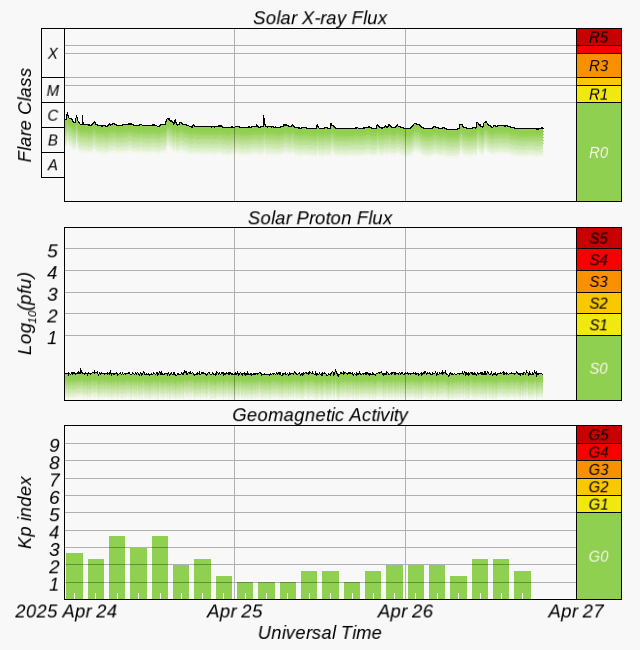Perhaps, but there’s plenty of ‘suggesting’ that something might possibly occur here. Plus of course the usual remarks about supposed human involvement in Earth’s climate. ‘An increased export of Arctic sea-ice into the subpolar North Atlantic’ is proposed as a driver of destabilisation (see study).
– – –
Scientists have used centuries-old clam shells to see how the North Atlantic climate system reached a “tipping point” before the Little Ice Age, says Phys.org.
The Little Ice Age —a period of regional cooling, especially in the North Atlantic—lasted several centuries, ending in about 1850.
A long-standing theory suggests initial cooling in this period was sustained by “sea-ice to ocean feedbacks”—sea ice expanded and this slowed ocean currents which in turn reduced the flow of warm water from the south.
The new study, by the University of Exeter, used the shells of quahog clams—which can live for several hundred years—to understand how the ocean has evolved and responded to external changes over recent centuries.
The findings show that the North Atlantic climate system destabilized and lost resilience (the ability to recover from external changes) prior to the Little Ice Age, possibly causing it to “tip” into a new, colder state.
And the researchers say the North Atlantic could be approaching a new tipping point, with major consequences for the region’s climate.
With scientists warning that multiple tipping points may now be approaching worldwide due to human-driven climate change, the study helps us understand when and how tipping points are triggered.
“One way to tell that a system is approaching a sudden transition is that it becomes slow to respond to perturbations (external changes),” said lead author Beatriz Arellano-Nava, of Exeter’s Global Systems Institute.
“In other words, a system loses the ability to return to its average state, and can instead ‘tip’ into a new state.”
“In the case of the North Atlantic prior to the Little Ice Age, this loss of resilience made the system vulnerable to an abrupt switch, potentially heralding the transition to Little Ice Age conditions,” said Dr. Paul Halloran, who co-led the research.
The new study warns that vulnerability of the North Atlantic system is a critical issue today, with recent analysis suggesting it has destabilized during the last century and might be approaching a tipping point.
Full article here.
– – –
Study: Destabilisation of the Subpolar North Atlantic prior to the Little Ice Age (2022)







‘The Little Ice Age —a period of regional cooling’ – Phys.org
Little Ice Age (LIA), climate interval that occurred from the early 14th century through the mid-19th century, when mountain glaciers expanded at several locations, including the European Alps, New Zealand, Alaska, and the southern Andes
https://www.britannica.com/science/Little-Ice-Age
– – –
Quite a big *region* 😎
“vulnerability of the North Atlantic system is a critical issue today,”
Yah, uh huh.
My critical issue today is the artificial escalation of energy cost caused by political meddling in the energy market.
These “scientists???”, I will just call them people, are ridiculous!
We are in a warm period, like the Medieval, or Roman before that, or like one of the warm periods before that. History and data show that warm periods last hundreds of years before it tips toward colder.
History shows this is true and Ice Core Data shows how and why.
During every warm period in ice core records, ice accumulation was more in the warm times and the cold times happened later as the piled up ice flowed and spread on land and into the oceans, and just like when you put the ice from your freezer into your ice chest, you spread the cooling by thawing ice. Yes, climate will tip, or rapidly cool after a few hundred years of more polar evaporation and ice sequestering. Yes, that ice pushed into the Gulf Stream will chill it to below freezing and sea ice will form, as it did at the end of the Medieval Warm period as the Vikings were frozen out of Greenland. Then a little ice age will stay cold a few hundred years while the land ice depletes, due the lack of snowfall while the Arctic is frozen.
History and ice core records show the why and how. They only study the last two hundred years and only study CO2 as a driver and only use temperature data since thermometers were invented, then they make predictions, determined by political leaders, because that is where all their funding comes from.
Too difficult for me to follow. I note that the campaign by Mikey Mann to describe the LIA as ‘local European’ has been defeated by world wide evidence. At this autumnal equinox it looks like Arctic ice is bottoming out at 4.7 Wadhams which is more than usual. Not significant, it’s weather
‘The new study, by the University of Exeter, used the shells of quahog clams—which can live for several hundred years—to understand how the ocean has evolved and responded to external changes over recent centuries.’
They tortured the clams til they talked.
http://pages.science-skeptical.de/MWP/MedievalWarmPeriod.htmx
SEPTEMBER 14, 2022
For the first time, we can measure the thickness of Arctic sea ice all year round
— by UiT The Arctic University of Norway
“When we use the new ice thickness data in advanced climate models, it will improve both our short-term forecasts for the weather at the mid-latitudes and the long-term forecasts that show what climate we will have in the future”
https://phys.org/news/2022-09-thickness-arctic-sea-ice-year.html
Marvellous 🙄. Will the models now have a tipping point predictor?
“Sea ice expanded…”
So that happened before it got colder?
Because that means it wasn’t regional. Can’t have that though.
The rest is just conjecture to suit their pre-existing narrative that needs to support the new paper on tipping points. Co-ordinated BS.
A subsidiary of the Money seeking UKMO
In 1817 Sir Joseph Banks, President of the Royal Society, sent a letter to The Admiralty noting the great loss of ice especially from the east coast of Greenland. They replied and for the next 25+ years mounted expeditions to try and find the Northwest Passage to Asia. These came to an end with the loss of the Franklin expedition in 1845.
Glacier bay (southern Alaska) had glaciers melting away before 1850. https://web.archive.org/web/20160214051639/http://soundwaves.usgs.gov/2001/07/fieldwork2.html
USGS: The glacier that filled Glacier Bay during the Little Ice Age began its retreat from the mouth of the bay more than 200 years ago and has exposed a magnificent fjord system about 100 km long. The massive glacier retreated past Sitakaday Narrows ~190 years ago, retreated past Whidbey Passage ~160 years ago, and reached the upper end of the main bay by 1860 (~140 years ago). [bold added]
Modern fuel-powered industry, transport etc. had barely started in those days, so no tipping point from that.
From the study in the post: The transition from the warm Medieval Climate Anomaly (MCA) to the Little Ice Age (LIA) was the last notable shift in the climate system before anthropogenic forcing became the significant factor shaping climate.
So how come the Glacier Bay retreat had started and was well underway before anthropogenic factors were even present?
“The Little Ice Age —a period of regional cooling,” uhh, we’ve had papers and data showing it happened in South America as well.
Very likely that the temperature is about to reach the high point for this cycle.
Its last high point was around 900ad and the last minimum was the Maunder Minimum around 1800. A roughly 1000 year cycle. One of many.
It is all due to the sun, sunspots, earth’s magnetic field, cosmic rays and clouds.
Study (intro) says: Although some environmental reconstructions suggest that the North Atlantic circulation system weakened during the MCA-LIA transition, it is unclear whether it exhibited tipping point behaviour.
Unclear? But the headline says ‘study *reveals*’… etc.
Later in the study:
The evidence presented here for loss of resilience in the subpolar North Atlantic before 1260, together with evidence for the weakening of the potentially bistable subpolar gyre, indicate that the onset of the LIA may have occurred in response to the subpolar gyre system passing a tipping point.
‘May have occurred’ – or may not have.
In the last ten thousand years, according to Antarctic Ice Core Records, about twelve warm times have tipped into colder times.
In that same time, according to Greenland Ice Core Records, about that many warm times have tipped into colder times, not in phase with the southern records.
These alternating warm and cold periods varied but in general a warm period stayed warm and few hundred years and then tipped into a colder period that stayed cold a few hundred years and tipped back.
They have taken something that very clearly happens in the natural way things happen and painted it into something that should never happen.
The Roman and Medieval and Modern warm times were and are warm due to the retreat of the glaciers and ice sheets. Ice core records show that there is more ice accumulation on the polar ice in the warmest times when the polar oceans are thawed. The water vapor from the Gulf Stream powers the Arctic Ice Machine, only in the warmest times. It stays warm as the heads of the Glaciers and Ice Sheets grow because the depth of the ice is increased but not the area of thawing and cooling, until later after the heavier ice flows faster. A thousand years ago, Greenland was warm and the Vikings lived well until the more ice piled up during the warm time, then flowed faster and pushed them out. The ice spread on land and was pushed into the ocean currents, chilling the tropical Gulf Stream to subfreezing temperatures. The Little Ice Age came on then and persisted until the ice was depleted. We are now in a Necessary and Natural and Self-Correcting “Modern Warm Period” that will persist until enough ice is sequestered to repeat the Little Ice Age.
Just read history and study Ice Core Records, all this is very well documented. During warmest times, polar sequestered ice grows faster and later spreads. During coldest times, polar oceans were frozen, so the sequestered ice depleted as it flowed and spread while chilling the tropical currents and sending cold currents back to chill the tropics.
Climate changes with very robust, self-correcting, alternating warm and cold periods!
They spend a huge amount of time explaining how temperature never changed before people caused warming!
Then they spend a huge amount of time explaining how past temperature change was caused by tipping points!
Then they crawl into a hole somewhere and figure out how to come up with a more frightening story.
@ popesclimatetheory – continued here…